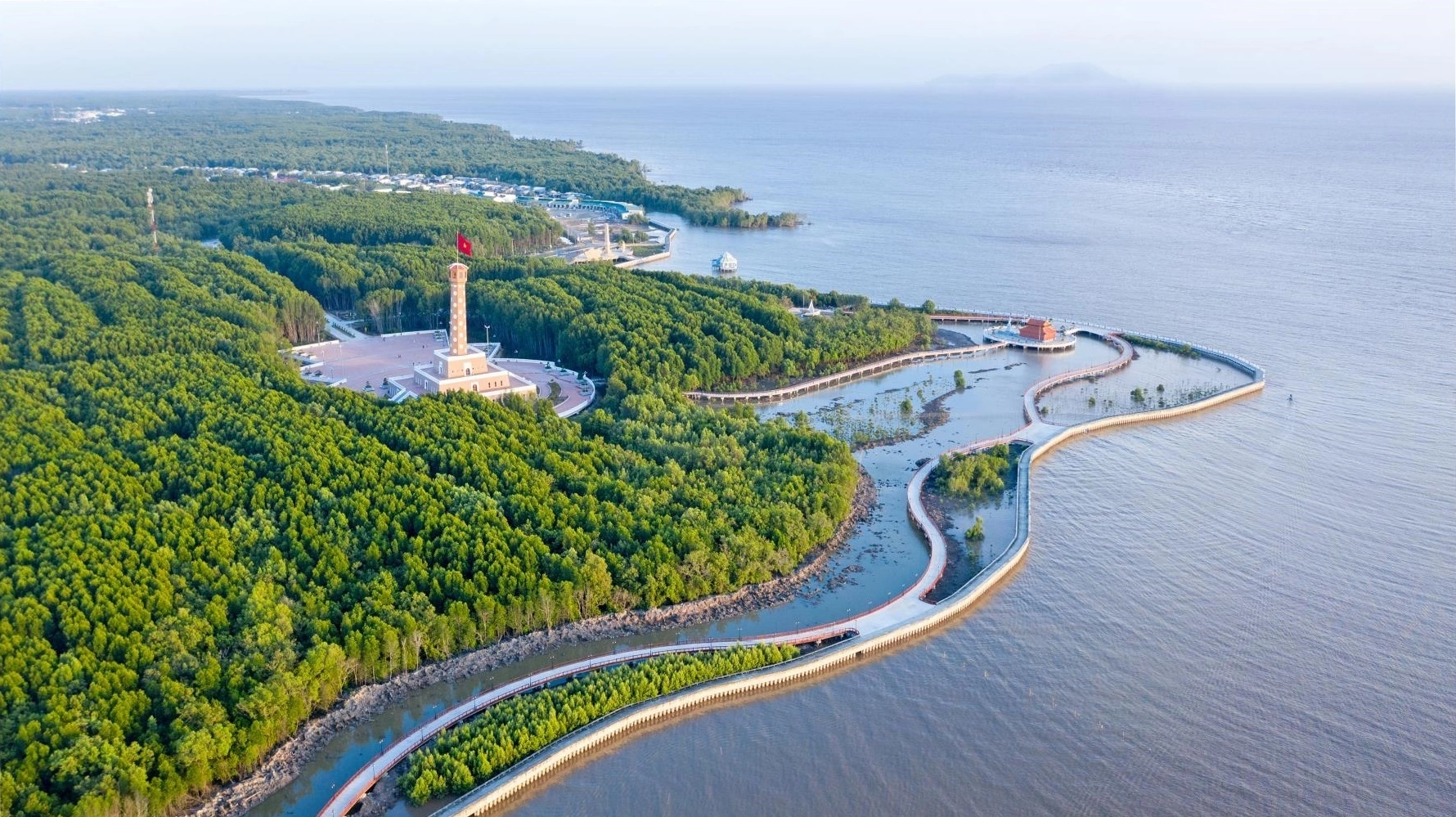
Visitors to Ca Mau will have the opportunity to see the mangrove forest that stretches along the coast, interact with friendly locals, and enjoy wonderful regional specialties.
Ca Mau, located in the Mekong Delta, is the southernmost province of Vietnam. The land has three sides adjacent to the sea: to the east is the East Sea, to the west and south is the Gulf of Thailand.
Although Ca Mau has a pleasant climate year-round, the dry season, which runs from December to April, is the best time to visit. The rainy season lasts from May to November. If you travel there around the seventh and eighth month of the lunar calendar, you will have a chance to enjoy many of the delicacies of this land.
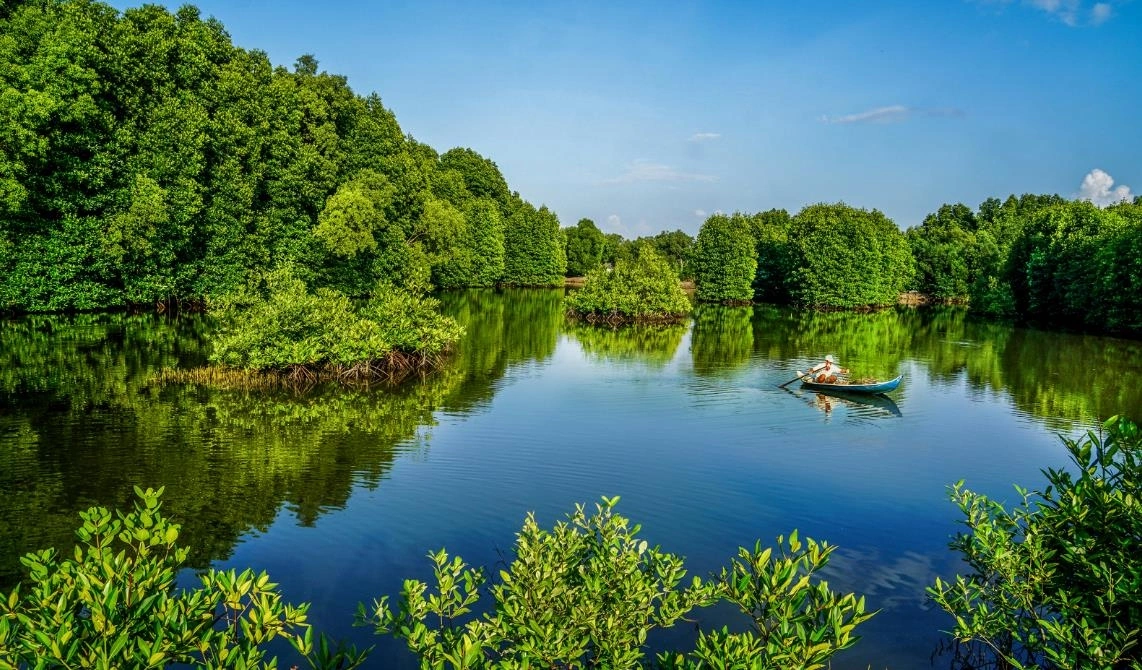
Ca Mau Cape
Ca Mau Cape is where the national coordinate GPS 0001 (0 kilometer) is placed. This landmark has the image of a ship reaching out to the sea. Ca Mau Cape is a place where you can watch the sunrise from the east sea in the morning and the sunset from the west sea in the afternoon.
Ca Mau Cape, which is more than 100 kilometers from the center of Ca Mau City, is also the last point on Ho Chi Minh Highway. The road starts from Pac Bo Village in Cao Bang Province, passes through 28 provinces and cities, and ends at the southernmost tip of Vietnam.
Travelers can also see the flag tower at Dat Mui. The building consists of 3 floors, 41 meters tall, and is modeled after the architecture of the Hanoi flag tower, which is one of the city’s symbols and once a part of the Hanoi Citadel, a World Heritage Site. From the top of the tower, you can see the mangrove forest and the East Sea.
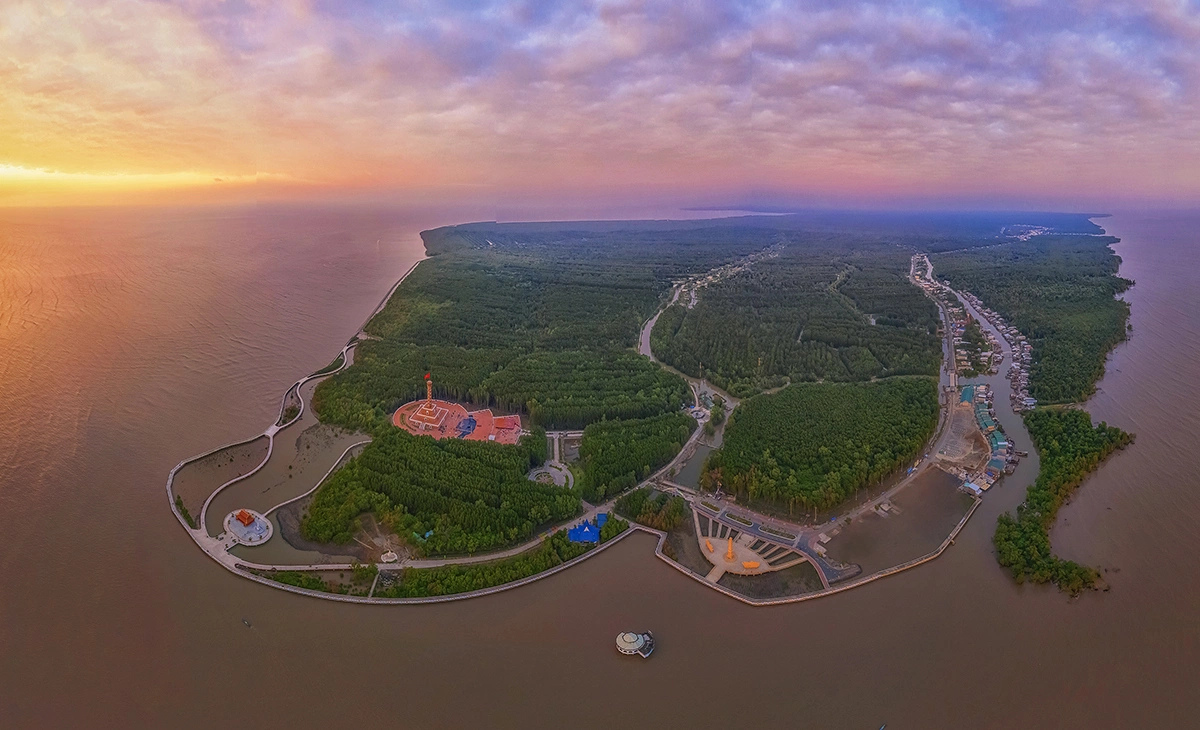
Forestry Fishery 184
Forestry Fishery 184 is situated in the Cha La Hamlet, Tam Giang Commune, Nam Can District, in the middle of the Nam Can mangrove forest. There are 44 species of plants, some of which are rare, such as lumnitzera racemosa, rhizophora mucronata, and aegiceras corniculatum. Traveling deep into the mangrove forest by boat, visitors may be surprised to spot monkeys there.
World biosphere reserve
The Ca Mau Cape World Biosphere Reserve is a natural mangrove ecosystem recognized by UNESCO. The reserve includes Ca Mau Cape National Park, U Minh Ha National Park, and the West Sea coastal protection forest area.
Travelers visiting here should not miss taking a boat trip through the forest at Ca Mau Cape National Park, or participating in mangrove planting. You can learn a lot about the variety of flora and fauna here, or experience bee-eating with local people in U Minh Ha forest.

Bird sanctuary
Ngoc Hien Bird Sanctuary covers an area of 130 hectares in Ngoc Hien District. It is home to rare bird species and a rich array of flora. You will be amazed by the red alluvial river branches interspersed among the enormous green swatches of the mangroves.
If you arrive early enough, you can see thousands of birds foraging or flying across the sky to return to their nests.
Other destinations for seeing wild birds are Tu Su Bird Garden (Thoi Binh District, about 30 kilometers from the city center), and the bird sanctuary in the heart of Ca Mau Town (Ly Van Lam Commune, Ward 1).

Hon Khoai Island
Hon Khoai Island is located in Ngoc Hien District, 14.6 kilometers from the mainland. It has a peak that is 318 meters above sea level and is recognized as a national, historical and cultural relic. This island is remarkable for its rocky ranges, undulating hills, and green forests.
Hon Da Bac Island
Hon Da Bac is a famous island with pristine features and colorful rocks, estimated to have been formed 180 million years ago. This beautiful island cluster consists of three islands located close to each other: Ong Ngo, Da Le, and Da Bac islands, the highest of which is 50 meters above sea level.
Khai Long Beach
Khai Long Beach has a sandy beach winding along the coast in Khai Long Hamlet, Dat Mui Commune, Ngoc Hien District. The beach, with its unspoiled beauty, is located in the mangrove ecosystem of the region.
Cai Tau Rambai Garden
Cai Tau Rambai Garden is in Nguyen Phich Commune, U Minh District, about 30 kilometers west of the Ca Mau center. This is the land of thousands of rambai trees. Travelers can sit in a canoe as it passes through the small canals to enjoy the peaceful scenery and savor the sweet and fragrant rambai fruit.
Cai Tau rambai fruits are large, have a thin skin, and are succulent, with a sweet and slightly sour taste. When the first rain of the season begins to fall, it means that the rambai are ripe. At this time, many local gardens are opened for travelers to enjoy a taste of Ca Mau’s special fruit.
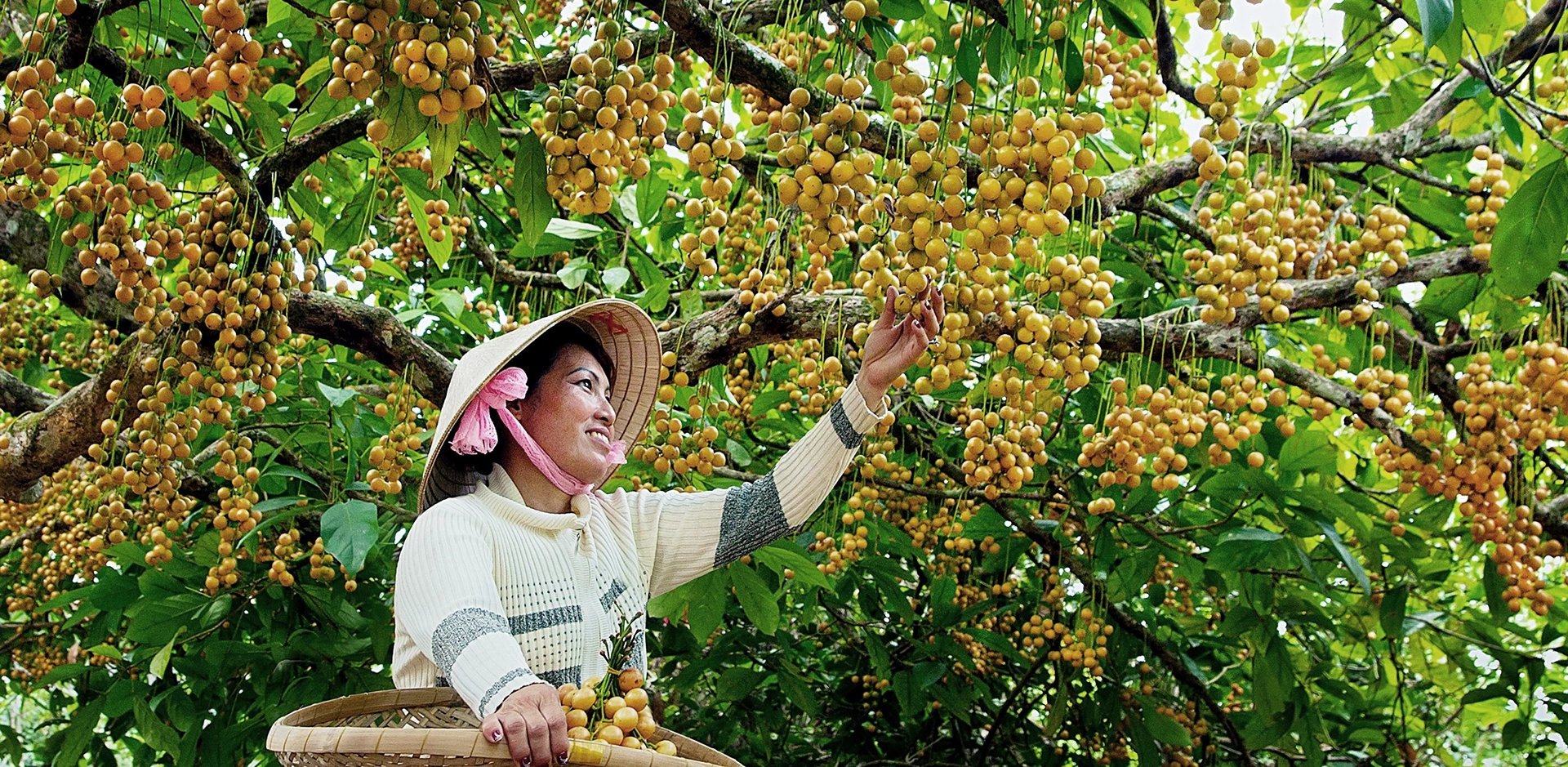
Trem River
Trem River, stretching 42 kilometers, begins at the Kien Giang-Cai Tau river confluence. Trem River is strangely beautiful because the water changes with the seasons. In the rainy season, the river water is red, dotted with blue water hyacinth flowers floating along the stream. In the dry season, the river water is milky white, and on the two sides are rows of green nipa palm.

Thi Tuong Lagoon
Thi Tuong lagoon is known as "the lake in the middle of the delta." This is the largest lagoon in the Mekong Delta with a length of 12 kilometers, with the widest point 2 kilometers, and the deepest part 1.5 meters.
While taking in the stunning scenery of the lagoon from a motorboat, visitors can experience fishing and eat fresh and delicious seafood.

Ca Mau crab
Crab is a famous delicacy in this region, as it is delicious and has a much sweeter taste than farmed crabs. The crabs harvested from the ponds are always fresh and affordable. The regular crabs cost between VND150,000 and VND300,000 per kilogram, while crabs with roe cost between VND300,000 and VND500,000 per kilogram.
Ca Mau crabs can be prepared in a variety of ways, ranging from simple methods like boiling, steaming, and charcoal grilling to more complex styles such as stir-frying with tamarind sauce, or in a hot pot or in crab noodle soup.
Mud clams
Mud clams are similar to regular clams but are larger and often live in mudflats, estuaries, and mangroves. Dat Mui mud clams are usually chewier and sweeter than those from other regions. They can be cooked in a sour soup, boiled, steamed, stir-fried, or grilled with scallion oil.
Sea snails
The sea snail, also known as the linh hoa snail, can often be found in mangrove forests. One of the most well-known recipes for this seafood is stir-fried snails with coconut milk.
Mangrove crab
Mangrove crabs are considered the most characteristic and famous delicacy of this region. Dishes such as mangrove crab salad with sticky rice and boiled or stir-fried with tamarind sauce, are usually ordered at the seafood restaurants in Ca Mau. Mangrove crabs have a distinct and irresistible flavor that cannot be mistaken for regular crabs.
Braised spotted scats with bush grapes
Spotted scats braised with bush grapes often appear in the daily meals of the locals of Dat Mui. Spotted scats live in both salt and brackish water. This fish has a small head, and its body is slightly round and flat. Spotted scats have a chewy and sweet taste, plus the skin of the fish is soft and fatty with a slight sour taste from the fruit.
Mudfish
Mudfish may appear rather strange to someone who has never seen one before. This fish, which inhabits swamps, has firm meat and no fishy flavor. A few different dishes that can be cooked from mudfish are grilled mudfish with salt and chili, deep-fried mudfish, mudfish sweet and sour soup, and braised mudfish with soy sauce.
Grilled snakehead fish
Grilled snakehead fish do not need marinating but still have a fragrant and sweet taste. The fish is nuong trui, or cooked by burying it in a burning haystack or straw for 10 to 15 minutes. If you want to eat the dish like a local, you can either hold the whole grilled fish to eat it, or put the fish in a roll of rice paper with herbs, star fruit, and cucumber, and then dip it in a sweet and sour fish sauce.
Bee pupae salad
One of the most unique foods in Ca Mau is bee pupae salad. Bee pupae are often processed into dishes such as porridge, stir-fried bee pupae, or salad, which is considered the best way to enjoy this ingredient.
Mam ong - fermented bee - is a specialty that not everyone dares to try. The people of Dat Mui often eat mam ong with white rice. In some restaurants, people use pork belly rolls with vegetables such as green banana, cucumber, ginger, chili and other herbs to eat together with mam ong.
Cattails
Cattails grow wild along the edges of lagoons and lakes. Cattails are considered a vegetable and can be made into many different dishes, such as cattail salad with seafood or pickled cattails. The core of the cattail is crispy, soft, and strangely sour.
Visitors can purchase the freshest and most affordable seafood of the day, including sea crabs, Rach Goc mangrove crabs, and well-known dried seafood products to take home as gifts. Pickled cattails and pure honey from the U Minh Melaleuca forest make excellent gifts for family and friends if you don't like seafood.
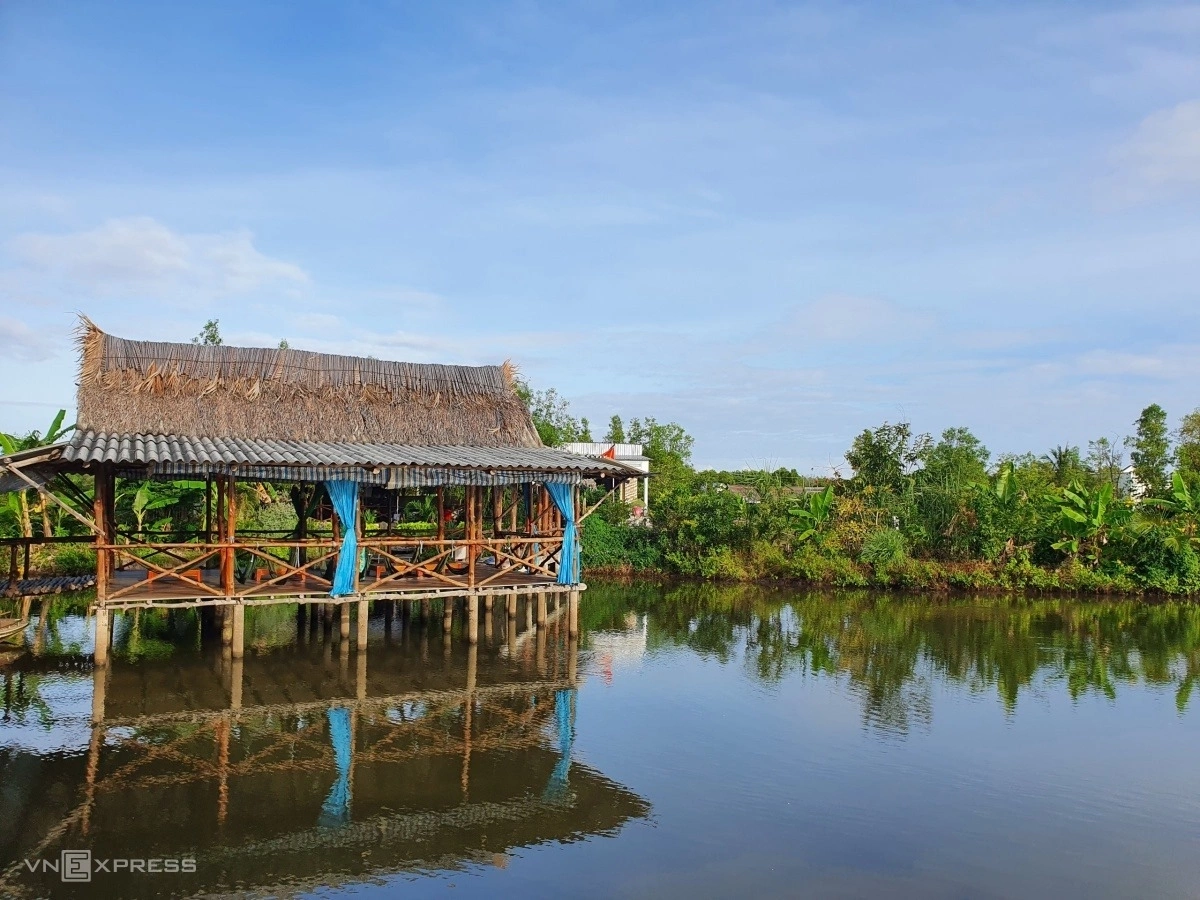
You should stay in the city center for convenient dining and entertainment. There are not many hotel options available on online booking platforms. Therefore, you should contact hotels directly for booking. Depending on the quality of the hotel, prices range from VND200,000 to VND600,000 per night.
The four-star Muong Thanh Luxury Hotel, which has a nightly rate of about VND1,400,000, is one of the best hotels in the area. Another luxurious option is the three-star Anh Nguyet Hotel, which costs roughly VND900,000 per night.
You can choose to stay in eco-tourism destinations and homestays such as Rung Duoc, Huong Dat Mui, Dan Ba Khia, Ba Su, Tu Nhuan, and Nam Huong if you want to unwind in Dat Mui's natural surroundings. The starting price is VND70,000 per person per night.
Ca Mau is more than 300 kilometers southwest of Ho Chi Minh City. From the north, you can choose a flight to Can Tho with Vietnam Airlines, Vietjet Air, or Bamboo Airlines, with ticket prices ranging from VND1,500,000 to VND2,000,000 ($63.88 to $85.17). From Can Tho Airport, visitors can travel to Ca Mau by passenger bus. A ticket costs from VND125,000 to VND150,000, and the distance is about 150 kilometers.
From Ho Chi Minh City, visitors can travel by passenger bus or drive themselves. Buses usually depart in the evening, and stop in the center of Ca Mau 7 to 8 hours later. For the route from Ho Chi Minh City to Ca Mau, some passenger bus companies charge a one-way fare of between VND190,000 and VND200,000 (Phuong Trang, Giap Diep, Mai Linh, and Tuan Hung are a few reliable bus companies).
The best way to explore Ca Mau City is by motorbike or car. You can also travel by boat and motor boat - which are popular modes of
transportation in Ca Mau due to the interlaced system of rivers and canals.
And if you plan to visit Dat Mui, a place with a rich and diverse mangrove ecosystem, which is more than 110 kilometers from Ca Mau, the most interesting means of transportation is by speedboat. The journey takes more than three hours, as the speedboat stops at spots along the way. Arriving at Dat Mui Market, you can continue your journey by taking a motorbike taxi to the Dat Mui tourist area, which is about 4 kilometers away. The price is around VND50,000 per person.
In addition, there are many local car companies specializing in the Ca Mau - Dat Mui route, such as Phuoc Nghia, Truong Giang, and Den Map, with prices ranging from VND120,000 to VND140,000 for a one way ticket.
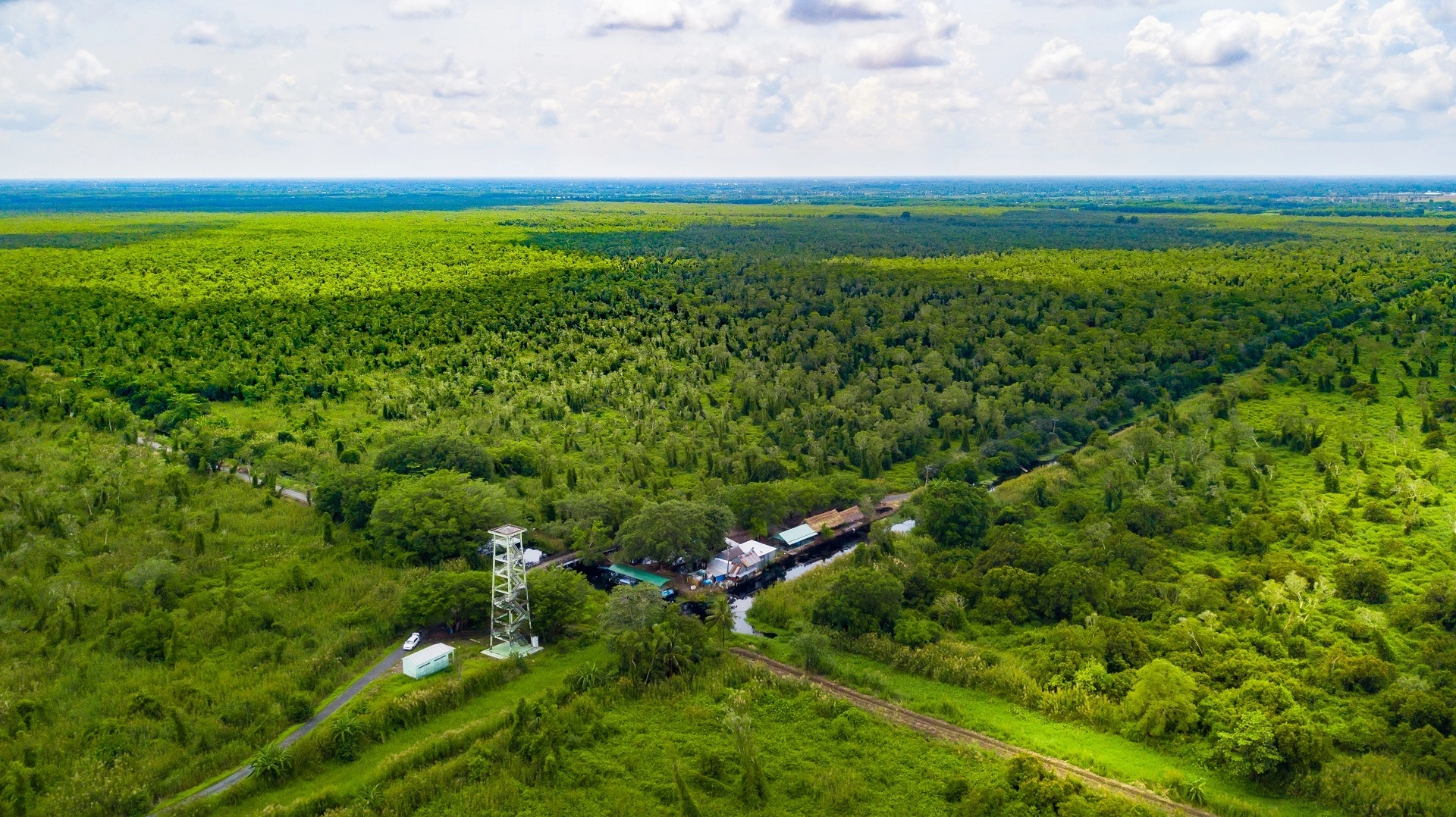
Du Hy